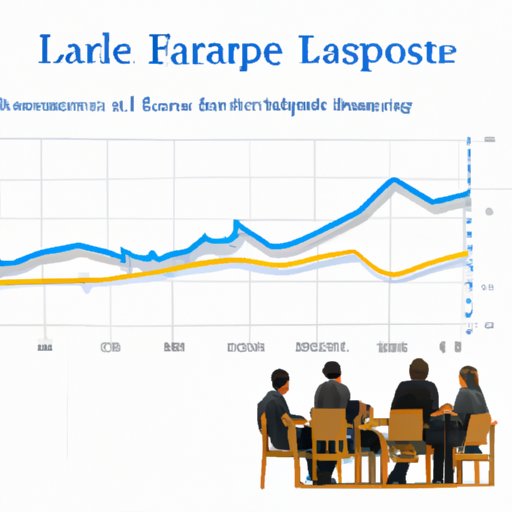Introduction
Laissez faire leadership is a management style that encourages employees to take initiative, be independent, and make their own decisions. The term “laissez faire” is French for “let do” or “leave it alone”, which reflects the hands-off approach of this type of leadership. Although there are many advantages to this style of leadership, there are also some drawbacks that must be considered before implementing it in an organisation.

Examining the Impact of Laissez Faire Leadership on Employee Performance
Employees often respond positively to a laissez faire leadership style. Studies have found that when employees are given autonomy and freedom to make decisions, they are more likely to take ownership of their work and be more productive. For example, a study by researchers at the University of California found that employees who were given more autonomy reported higher job satisfaction and better performance. Additionally, when employees are allowed to make their own decisions, they are more likely to come up with innovative solutions and develop new skills.
The Benefits of Laissez Faire Leadership on Employee Performance
One of the main benefits of laissez faire leadership is that it can help to foster a culture of creativity and innovation. When employees are given the freedom to think outside the box and come up with their own ideas, they can help to drive the organisation forward. Additionally, when employees are allowed to make their own decisions, they tend to take more responsibility for their work, leading to greater job satisfaction and improved performance.
The Drawbacks of Laissez Faire Leadership on Employee Performance
Although there are some benefits to laissez faire leadership, there are also some potential drawbacks. One of the main issues is that without clear direction from leaders, employees can become confused about their roles and responsibilities. Additionally, without clear guidelines and expectations, employees may struggle to stay on track and meet deadlines. Finally, if not managed properly, a laissez faire leadership style can lead to a lack of accountability, as employees are not held to the same standards.

How to Implement a Laissez Faire Leadership Style in Your Organisation
In order to successfully implement a laissez faire leadership style in your organisation, it is important to take the following steps:
Establishing Clear Goals and Expectations
It is important to establish clear goals and expectations for employees so that they know what is expected of them. This will help to ensure that everyone is on the same page and working towards the same objectives.
Setting Boundaries and Delegating Responsibility
Leaders should also set boundaries and delegate responsibility to ensure that employees are held accountable for their actions. This will help to keep employees focused on the task at hand and prevent them from straying off course.
Empowering Employees to Make Decisions
Finally, leaders should empower employees to make their own decisions. This will give employees a sense of ownership and encourage them to take initiative and come up with creative solutions.
The Benefits and Drawbacks of Laissez Faire Leadership
As with any leadership style, there are both benefits and drawbacks to implementing a laissez faire leadership style. It is important to consider both the pros and cons of this approach in order to decide if it is the right fit for your organisation.
Benefits of Laissez Faire Leadership
The main benefit of laissez faire leadership is that it encourages employees to take initiative and come up with creative solutions. Additionally, it allows employees to make their own decisions, which can lead to increased job satisfaction and improved performance. Finally, it can help to foster a culture of trust and collaboration, as employees are free to work together to achieve their goals.
Drawbacks of Laissez Faire Leadership
The main drawback of laissez faire leadership is that it can lead to a lack of accountability, as employees are not held to the same standards. Additionally, without clear direction from leaders, employees can become confused about their roles and responsibilities. Finally, it can be difficult to manage a team of employees who are all making their own decisions, as it can be difficult to ensure that everyone is working towards the same goal.
Analysing the Effectiveness of Laissez Faire Leadership in Today’s Workplace
In order to determine whether or not laissez faire leadership is effective in today’s workplace, it is important to consider a number of factors. These include the size of the organisation, the type of work being done, and the overall culture of the organisation.
Factors Influencing the Success of Laissez Faire Leadership
The success of laissez faire leadership depends on several factors, such as the size of the organisation, the type of work being done, and the overall culture of the organisation. In larger organisations, it may be more difficult to manage a team of employees who are all making their own decisions. Additionally, certain types of work may require more structure and oversight than others. Finally, the culture of the organisation will play a significant role in determining whether or not laissez faire leadership is successful.
Examples of Companies Using Laissez Faire Leadership
There are a number of companies that have adopted laissez faire leadership as part of their organisational culture. Google is one example, as the company has a flat hierarchy and encourages employees to take initiative and come up with their own ideas. Additionally, Zappos is another example, as the company has a relaxed atmosphere and encourages employees to take risks and make their own decisions.
Assessing the Long-Term Impact of Laissez Faire Leadership
When assessing the long-term impact of laissez faire leadership, it is important to consider the potential benefits and drawbacks. While this style of leadership can lead to increased creativity and innovation, it can also lead to a lack of accountability if not managed properly. Additionally, it is important to consider whether or not this style of leadership is the right fit for your organisation.
Conclusion
Laissez faire leadership is a management style that encourages employees to take initiative, be independent, and make their own decisions. There are many advantages to this style of leadership, including increased creativity and innovation, increased job satisfaction, and improved performance. However, there are also some potential drawbacks, such as a lack of accountability and confusion about roles and responsibilities. Ultimately, it is important to consider the size of the organisation, the type of work being done, and the overall culture of the organisation before implementing a laissez faire leadership style.
Summary of the Advantages and Disadvantages of Laissez Faire Leadership
The advantages of laissez faire leadership include increased creativity and innovation, increased job satisfaction, and improved performance. The drawbacks include a lack of accountability and confusion about roles and responsibilities. Additionally, it is important to consider the size of the organisation, the type of work being done, and the overall culture of the organisation before implementing a laissez faire leadership style.
Final Thoughts on Laissez Faire Leadership
Laissez faire leadership can be an effective way to foster creativity and innovation in an organisation. However, it is important to consider the potential drawbacks of this style of leadership before implementing it. Additionally, it is important to assess the size of the organisation, the type of work being done, and the overall culture of the organisation in order to determine whether or not this style of leadership is the right fit for your organisation.
(Note: Is this article not meeting your expectations? Do you have knowledge or insights to share? Unlock new opportunities and expand your reach by joining our authors team. Click Registration to join us and share your expertise with our readers.)
